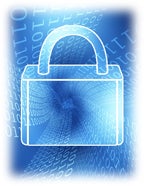Cyber Security: Stay Informed and Alert
 In this era of rapid change, evolving voice and data technologies are bringing the world within reach for more and more people. In return, people are becoming more and more visible to the world. Everyone from product-sellers to political campaigns to hackers are using the new technologies to understand and persuade their target audiences.
In this era of rapid change, evolving voice and data technologies are bringing the world within reach for more and more people. In return, people are becoming more and more visible to the world. Everyone from product-sellers to political campaigns to hackers are using the new technologies to understand and persuade their target audiences.
When it comes to hackers, technological advances in cyber-security are important. Even so, experts say scammers are a lot less likely to take advantage of technical glitches than human ones. Most of the time, people are easier to fool than devices.
“Spoofing” used to refer mostly to fake email solicitations designed to get people to send money, like the Nigerian banker scam. These days, the bad guys use a variety of digital networks to target their victims. These can include:
-
Emails with embedded links that take users to fraudulent web pages or damaging downloads;
-
Emails with file attachments that release malware when opened;
-
Fake wifi access points luring smart device or laptop users in restaurants or public places;
-
False text messages about suspended accounts;
-
Fake profiles in social media for celebrities or companies;
-
Urgent phone from call centers using familiar, but fake, caller-IDs.
Staying informed and alert is increasingly important. Experts advise people to use the same caution in online interactions that they would interacting with strangers on a crowded street in a strange city.
Here are some questions that may raise red flags when a voice or data message tells you to take action.
-
Is the sender (or caller) someone you’ve never met, regardless of whether you’ve heard of them?
-
If you know the sender, is this email, text, or other communication unusual for them?
-
Was this contact unexpected ?
-
Were you sent a file you never requested?
-
Were you copied on an email or contact sent to someone else?
-
Is the sender or caller trying to rush you into taking action of some kind?
-
Does anything else about this email, call, or contact seem strange in any way?
It’s important to follow up on any doubts these questions raise.
-
Contact the sender or caller by another method. Look up the phone number and call the sender of an email, for instance.
-
Even if you think a caller is legitimate, it never hurts to get their phone number and call them back. You can also check their phone number online to see if it is from the right area code and prefix for the person contacting you.
-
Take your time. Legitimate contacts will understand the need for security and confirmation.
You can help protect others by reporting suspect calls, emails, and other contacts to the United States Computer Emergency Readiness Team (US-CERT) at www.us-cert.gov. That site also offers ongoing updates and advice on cyber-security

